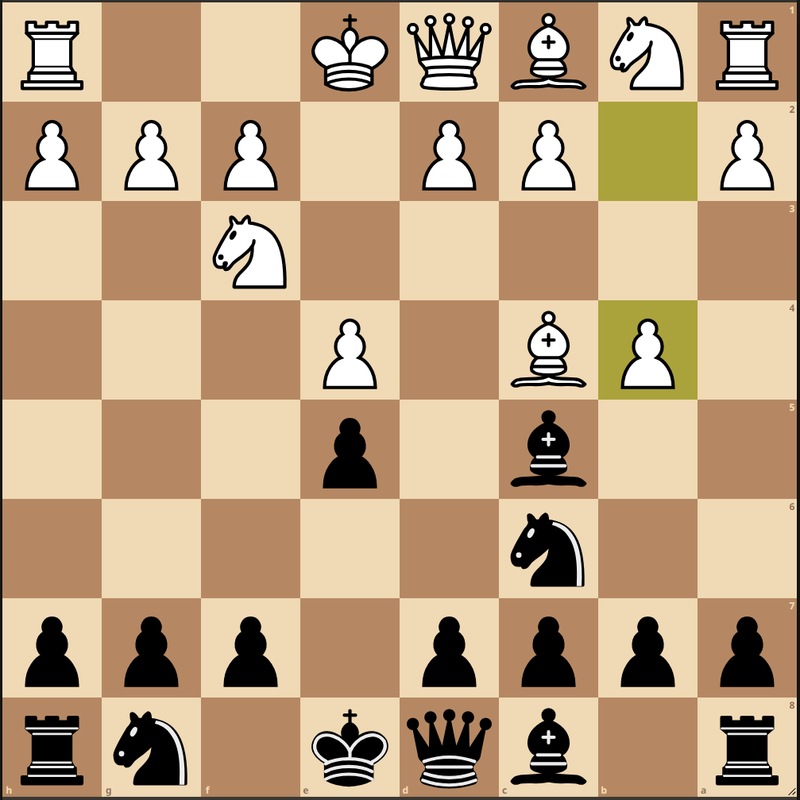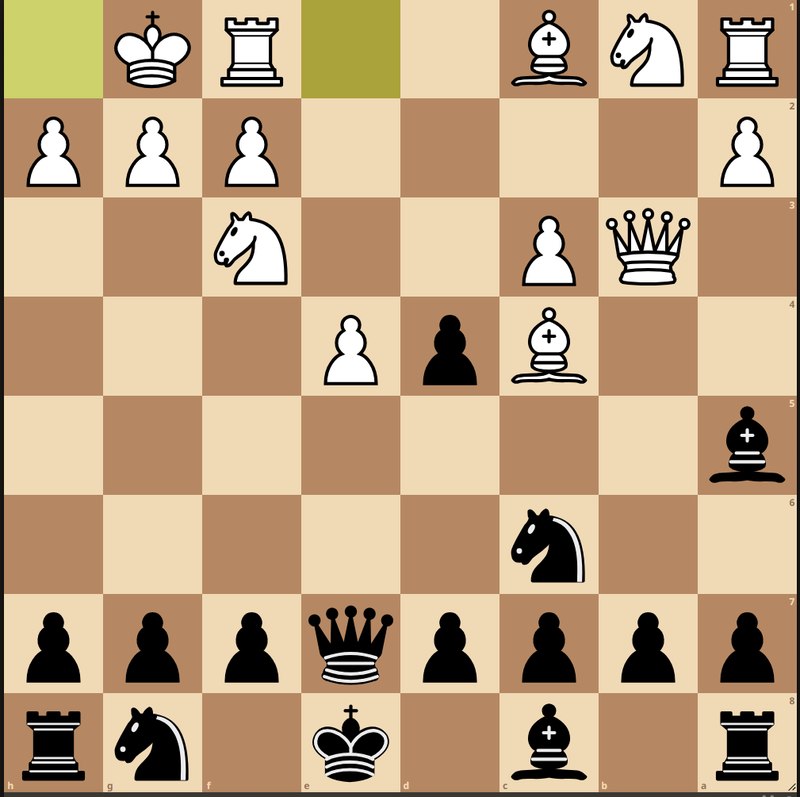
Osama Madlom on Unsplash
The simple way to learn a new opening
Studying a new opening doesn't have to be overwhelming.Hey everyone,
Today's article will teach you my current method of teaching new openings to my private students. This helped a student learn a totally new black repertoire in around 2 hours.
Studying a new opening can be overwhelming. Many study dozens of hours of theory before you first play that new opening. By the time they play their first game, they forget 50% of it. There is a better way. If you study only what is necessary and then improve your opening with every game you play, you can start playing a new opening in a few hours. Here is the process I use with my students:
- Step 1: Learn fundamental ideas and theory
- Step 2: Play some games
- Step 3: Deepen understanding and theory in lines that happened in games
Learning fundamental ideas
Losing straight out of the opening sucks. I don’t want to set my students up for miniatures in the wrong direction. So, they need a little bit of fundamental theory and ideas. Recently, I taught one of my students all the basics of 1.e4 e5 for black in 2 hours. We looked at some tricky gambits, early Queen exits, and the main ideas against the big lines: Scotch, Italian, Spanish. For players below 2000, this can be enough to get you going.
The key is not to expect to know everything; just try the best you can with what you know. If we compare that approach with a full-blown opening course that often has 30-40 hours of video, you will save between 28-38 hours on this step. That’s a lot of time you can use to play, analyze, understand better and deepen your knowledge.
How to learn fundamentals on your own
There are a few ways to learn the basics of an opening on your own.
- Find a good YouTube Video. Specifically for openings, I like Alex Banzea (his courses are also good). Alessia has a video on the Italian as another example.
- Check out my Beginner Course (best for players below 1200 Chess.com), where I give a free, super short repertoire for White / Black as a Bonus.
- Get a free Short & Sweet Chessable course. These courses are meant as advertisements for huge courses but often are enough for players in the sub-2000s. At least as a start!
I also like ChessMood’s WhiteMood Starter and BlackMood Starter courses (both affiliate links). They are a little longer than 2 hours (7h 41m for White; 4h 43m for Black) but very well done. For those seeking to dive deeper over time, either going with ChessMood or a Chessable course can be beneficial because they have more than enough theory for basically anyone. But remember, to start out, just focus on the fundamentals.
Play, Analyze, Expand.
Now, you are ready to play your new opening! That can be scary, but only if you have the wrong mindset. These games must be seen as an opportunity to learn. And even if something goes wrong in the opening, you will most likely still get your chances later on.
If you are planning to play the new opening OTB, you might want to open up an anonymous account to avoid spoiling your surprise.
Now, play a pre-determined amount of games (helps avoid tilt). Whenever you get the chance to play your new opening, do so. After the playing session, take a short break and then look at your games. Put a special focus on the games you played with the new opening. Here are a few questions you should answer:
- What was the first move I wasn’t sure about?
- Is the line I played good or do I need to change a move somewhere?
- If I have to change, what will I do differently facing this line again?
Ideally, you not only improve your move but also understand why the move you played isn’t ideal. After a few games, my student first faced the Evans Gambit (1.e4 e5 2.Nf3 Nc6 3.Bc4 Bc5 4.b4!?)

Without knowing the theory, he went 4...Nxb4 5.c3 Nc6 6.d4, and now White already has a very pleasant position. So I told him to go 4...Bxb4 because this allows for 5.c3 Ba5!, the Bishop is not attacked after 6.d4. A month went by without any more Evans games. Then, someone tried it again. He remembered Ba5 but did not remember the nice move 6...d6. Instead, he went 6...exd4. Then, after 7.Qb3 Qe7 8.0-0 he soon realized the position is not easy to play.

Now it is even more clear to him why 6...d6 is such a nice move. We keep the structure intact, and he can play Nf6 in the future without having to worry about e4-e5. In two games where he scored 50%, he basically learned all he had to know about the Evans Gambit without watching long courses or remembering absurd lines.
How to play, analyze, and expand on your own
Obviously, it is easier if you have a coach who is going through your games and helping you with that process. But you can still do it yourself. Here is how:
- Step 1:
Make sure to check with your course/database to see where you went wrong. You might even be lucky to see that there is an explanation for the move you should play instead. Now that you have playing experience, it will be much more likely that you remember this line better. To increase your chances even further, try to understand why your move was bad and why the given line is good.
- Step 2:
If there is no good explanation or the move your opponent played was not discussed in the resource you are consulting, look at the position with an opening book and Stockfish. The easiest way to do so is directly in game analysis or with a Lichess study. Compare the first wrong move you made with the most played move in this position and the Engine suggestion. Do not only look for a better move but try to understand why you are supposed to play this way.
- Step 3:
Make sure to save your work somewhere you can retrieve it. The idea is that at some point you have your own complete repertoire in a database/study. This might sound slow, but after 50-100 games, you will see quite a few different lines and always improve your opening by at least one move. This database is also a great reminder of what not to study. You will realize that some lines that are discussed for hours in some opening courses literally never happen in your games. Ignore those lines until you face them for the first time.
Summary
Studying a new opening doesn’t have to be a month-long project. Done smartly, you can play a new opening after only a few hours of study. Then you increase your knowledge step-by-step by analyzing the opening lines you actually get in your games.
- Step 1: Get a nice overview of your new opening (YouTube Videos, my Beginner Repertoire, Chessable Short & Sweet...)
- Step 2: Play your first games with the new opening
- Step 3: Analyze your games and see where you went wrong. Go deeper into the lines you felt unsure about.
- Step 4: Only repeat your opening lines after having played a game in a given line. Trust me, you’ll be fine.
Here is to better openings with less memorization.
Want to learn more Chess from a Grandmaster?
- Sign up for my free Newsletter so you get articles just like this one every Friday in your inbox.
- Learn how to train well with my free eBook. You can download your free digital copy here.
You may also like
 CM HGabor
CM HGaborEffective training methods - doing tactics
My previous post was about chess training in general. We will dive into the details now. So, what yo… WFM fla2021
WFM fla2021Bishop or Knight? Which one to choose?
In this blog post, I want to show you some practical examples to help you understand when a bishop i… FM CheckRaiseMate
FM CheckRaiseMateThe Power of a Plan
And how to make the engine into an effective teacher GM NoelStuder
GM NoelStuderFrom Bullied Kid To Grandmaster - How Chess Saved My Life
This article is a special one, and one that I thought about never publishing. GM NoelStuder
GM NoelStuderExceptional results - simple training
We all want exceptional results. So how can we get them? GM NoelStuder
GM NoelStuder